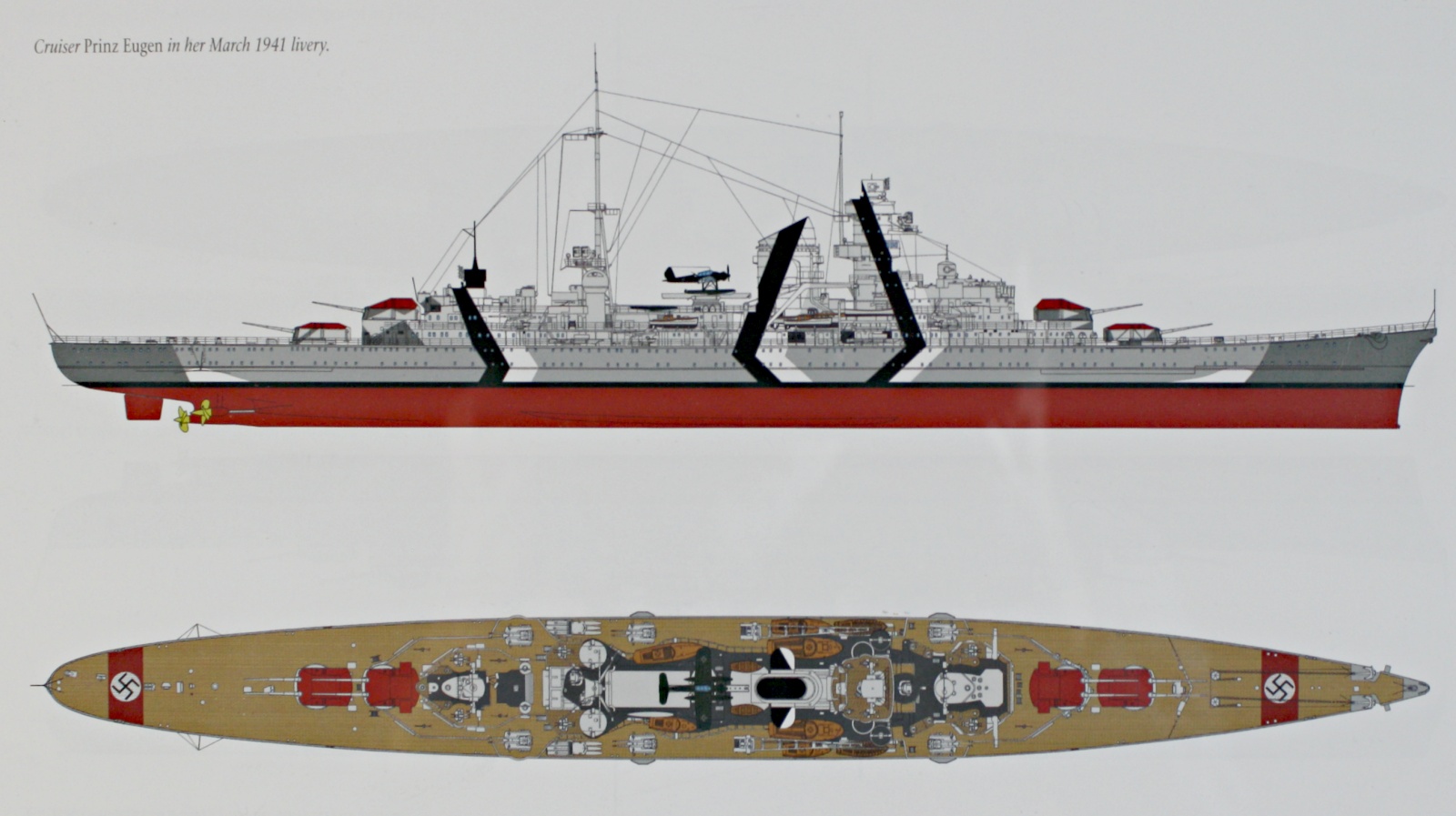German Cruisers Ww2 - The M-class cruiser was a light cruiser designed but never built by the Nazi German Kriegsmarine before World War II. These ships were designed for commercial raids in the Atlantic. There were many problems with the design of the first four ships, so the fifth and sixth ships were redesigned.
The name of the class comes from the character representing the first expected position. Until ships were named, they were referred to by letters written in chronological order of planned construction. The first planned unit would have been the 30th German cruiser, which is why it was listed as an M cruiser in naval documents. If both ships were built, the class would be named after the first unit.
German Cruisers Ww2

In the early 1930s, Adolf Hitler launched a program of rearmament in Germany. In 1935, he signed the Anglo-German Naval Agreement, which allowed the Royal Navy to build up to 35 percent of its navy, effectively rejecting the Treaty of Versailles restrictions on the German fleet. Versailles limited German naval patrol power to six ships of 6,000 metric tons (5,900 t) displacement.
Hitler Vs. A Monster Battleship: Nazi Germany's Bismarck Vs. The Biggest Battleship Ever
The M-class was designed as a commercial strike force reconnaissance vehicle envisioned in German strategic thinking at the time, which would have been the blueprint for the Z plan.
The ship's design process began in 1936. These ships are designed for long-distance trade. They were an improvement over earlier designs such as the Königsberg and Leipzig classes, and were insufficient to be effective merchant raiders. However, the design requirements - maximum and cruising speed, long range, heavy weapons and armor to withstand a 15 cm (5.9 in) shell, all at a maximum of 8,000 t (7,900 t). 8800 short tons) was considered impossible by the designers. In July 1937, the Oberbefelschäfer der Zeitung (Commander-in-Chief of the Navy) requested proposals from naval design staff and private dockyards. None of the shipyard plans are practical, so a formal plan that meets only a few requirements is not enough.
During the further development of the design, serious flaws were revealed, such as the weakness of the main battery and anti-aircraft armament, as well as the insufficient protection of thick weapons. The amazing arrangement of deck armor wasted space and was therefore inappropriate. The layout of the drive system was also problematic. Both turbines were housed in the same housing, so each would be disabled if the other failed. The ship's space is also insufficient for long-haul voyages. As a result, the last two ships of the Q and R class underwent significant design changes. The original design was taken from existing British and French ships, the Southampton class and the La Galissonnière class. The most obvious influence on the design of the Southampton class was the spreading of the side armor of the M-class ships.
M's contract was awarded to German Werke in Kiel for project 263. N was followed by No. 129 at Kriegsmarinewerft in Wilhelmshaven. O - Construction No. 606 - Ordered to Germaniawerft at Kiel, but contracted on 8 August 1939. Transferred to Kriegsmarinewerft. P also went to Germany with 607 points. Q was assigned to Schichau, Danzig, and R's contract was given to German Werke. Only the spines of M and N were laid - in 1938, but with the outbreak of World War II, construction was suspended on 19 and 21 September 1939. Soon after, both stocks split into stocks.
Scharnhorst In World War Ii
The first four M-class ships—M, N, O, and P—have a waterline length of 178 meters (584 ft) and a beam of 183 meters (600 ft). The beam is 17 m, and their draft is 5.42 m (17 ft 9 in), forward 7.25 m, and 6.03 m (19 ft 9 in). The vessels' planned displacement is 8,500 tons (8,400 long tons; 9,400 short tons), with a normal load of 7,800 tons (7,700 long tons; 8,600 short tons). 10,400 tons (1,200 long tons; 11,500 tons) fully loaded. The last two ships, Q and R, are of larger design: 188 meters (616 ft) in waterline and 196 meters (643 ft) in draft. Their beams were 18 meters (59 ft) wide and 1 meter wide. Their design was less than 5.4 meters (17 ft). They were designed to displace 9,300 t (9,200 long tons; 10,300 short tons) and could displace 8,568 t (8,433 t; 9,445 short tons) as standard. Full cargo numbers are unknown.
All six ships are made of steel, 85% welded. The design required fifteen watertight compartments and a double bottom for 78% of the ship's length. The crew was 28 men and 892 meters. They are designed to carry a boat, cargo, launcher and two cutters. An Ar 196 seaplane was launched with a steam engine and would be taken for reconnaissance.
All six vessels are designed with two Braun, Boveri & Cie and Wagner steam turbines or German-made marine type turbines and four MAN double-acting 12-cylinder two-stroke diesel engines. However, the Q and R are fitted with four more diesel engines, for a total of eight. These turbines are powered by four Wagner super-high pressure water tube boilers designed to produce 58 atmospheres of pressure. The propulsion system drives three numbers, although four are considered Q and R. The ships are powered by four generators, 2400 kW at 220 volts.

One of the battleship Bismarck's 15-inch turrets looks like something befitting an M-class
Asisbiz Kriegsmarine German Light Cruiser Kms Emden Planned 1940 Refit By Dg Alpha 0a
All six ships are armed with the same weapons. Primary armament consisted of eight and 15 cm L/55 rapid-fire guns, with superfiring pairs mounted in four twin turrets fore and aft. The guns have a total of 960 rounds, 120 rounds per gun.
The twin 15 cm turrets were Drh L. C/34 ridges, similar to those of the Bismarck and Scharnhorst class battleships and many other designs.
The turrets allowed for -10 degrees dip and 40 degrees elevation, with a maximum range of 22,000 meters (24,000 yd). The 15 cm gun had a rate of rotation of 6 to 8 45.3 kg (100 lb) per minute and a muzzle velocity of 875 m/s (2,871 ft). The weapons used two propellant charges: a 14.15 kg (31.2 lb) RPC/38 pre-charger and a 23.5 kg (52 lb) main charge.
These ships carried four 8.8 cm L/76 anti-aircraft guns in two twin turrets behind the main superstructure. The 8.8 cm gun is loaded with 1600 rounds, 400 rounds per gun.
Graf Spee, Deutschland Class Heavy Cruiser, German Warship World War Ii Graf Spee Stock Photo
These guns fired a 19.8 kg (44 lb) high-explosive bullet at a rate of 15–20 rounds per minute and a muzzle velocity of 950 m/s (317 mph). The guns could rise up to 80 degrees, which would allow them to hit targets flying at an altitude of 12,400 meters.
M-class ships also mounted eight 3.7 cm AA guns in twin mounts mounted on the superstructure. They have a total of 9,600 cases. Anti-aircraft armament was supplemented by four-inch cannons, each with 2,000 rounds. The ships were also equipped with 53 cm (21 ft) torpedo tubes and about 60 mines.
The ships were to be protected by Krupp and Wotan, Hart ("Wotan", hard) armor. The inner layer of armor belt is 50 mm thick in critical areas amidships and tapers to zero protection at the stern and bow. The outer layer was 30 mm in the middle of the ship. These two ships are zero. The flat part of the ladder is 20 mm thick, and the bottom of the belt armor is 35 mm thick. The top of the tower is 50mm thick and the sides are 100mm thick. The gun turret had the same armor protection as the earlier light cruiser Nürnberg: sides 35 mm thick, front 80 mm, and roof 20 to 35 mm thick. The armor protecting the turret was 60mm thick. Beginning in the 1880s, the German Kaiserliche Navy (Imperial Navy) began building a series of cruisers. The first designs, protected and unprotected, were ordered to replace aging sailing ships and steam-powered frigates and coffins of minimal combat value. After several iterations of various types, the cruiser evolved into armored and light cruisers over the next decade. They were designed for a variety of roles, including scouts for major warships and colonial cruisers of the German Overseas Empire. And the armored cruiser led to the first German battleship SMS Von der Tann.

Both protected and unprotected cruisers were withdrawn from active service by the 1910s, although some continued to play a secondary role. Most are armored and light cruisers
Cruiser Nürnberg: Post Wwii Service
Japanese cruisers ww2, german cruisers, italian cruisers ww2, german light cruisers ww2, american heavy cruisers ww2, ww2 cruisers, ww2 heavy cruisers, german cruisers of ww2, us light cruisers ww2, japanese heavy cruisers ww2, german auxiliary cruisers ww2, ww2 german cruisers
0 Comments